No Products in the Cart
Liquid Glucosamine for Dogs or Glucosamine Chews - What is best?

As a veterinarian, I often come across pet owners looking for joint health supplements for their dogs. One of the most popular ingredients in such supplements is glucosamine, which has been around for more than two decades now. Glucosamine comes in many forms that are not equal. And, not all veterinarians may approve use of glucosamine for dog's joints.
A vet's Expert opinion on glucosamine for dogs joint health
Glucosamine is safe for dogs, but you should take caution if your dog has any allergies, especially shellfish allergies.
Glucosamine is often paired with chondroitin due to its believed complementary mode of action. However, studies have produced mixed results when it comes to their effectiveness.
While some studies have shown positive outcomes, such as the one conducted in 2007, others have not produced conclusive results. A review in 2017 concluded that "although glucosamine and chondroitin have benign adverse effect profiles, the clinical benefit of using these agents remains questionable."
As a veterinarian, I recommend exploring other ingredients that have been shown to benefit joint health, such as undenatured type II collagen.


The pros and cons of liquid glucosamine for dogs
Liquid glucosamine is a form of supplement that is made by dissolving glucosamine in a liquid base. This type of glucosamine can seem attractive to dog owners because it can be used as a topper on top of food. Additionally, liquid glucosamine may provide a higher concentration of the substance than tablets, potentially leading to better joint health outcomes for dogs.
However, if your dog is finicky with food, they may not eat their bowl if you add liquid glucosamine to it. In such cases, you can always administer it directly into their mouth, assuming you can safely open it.
Pros of liquid glucosamine:
- Can be used as a topper on top of the food.
- Higher concentration absorbed compared to tablets (as shown by studies).
Cons of liquid glucosamine:
- May not be eaten by picky dogs.
- If your dog doesn't eat it as a topper, you should only administer it in their mouth if you can open it safely .


A Vet Expert's 5 Reasons to Use Collagen for Dog Joint Health
Collagen is a protein that plays a vital role in the health of our body's connective tissues, including joint cartilage. I will discuss the safety and benefits of collagen for dogs, the different forms it can come in, and my recommendation regarding the best collagen supplement for dog joints.
Learn MoreForms of Glucosamine for Dogs
Each form of glucosamine has its own set of benefits and potential downsides. The best choice for your dog will depend on their specific needs, preferences, and any underlying health conditions. Consulting with your veterinarian can help you make an informed decision tailored to your furry friend's well-being.
Types of Glucosamine for Dogs
When thinking about glucosamine for your dog, it's important to know the different forms available, as each has its own pros and cons. Here are some common types you might come across:
Liquid Glucosamine
Liquid glucosamine is popular because it's easy to give to your dog. You can mix it with their food or give it directly by mouth. It gets absorbed quickly, so it might help faster. If you've read our other articles, you probably know we're not big fans of glucosamine. However, if you still want to use it, this form might be interesting.
Plus, you can adjust the dose easily based on your dog's needs. Many liquid glucosamine products have flavors added to make them more appealing to picky eaters.
Glucosamine Chews
Glucosamine chews are a favorite since they double as treats. They come in various flavors and sizes, making them attractive to most dogs. They’re convenient because you don’t have to mix supplements into food. However, they might be absorbed more slowly than liquid forms, and some chews might have extra ingredients that could bother dogs with allergies or sensitivities.
Glucosamine Tablets and Capsules
Tablets and capsules are another common form of glucosamine for dogs. They’re easy to store and have a long shelf life. You can give them directly or hide them in food or treats. While they’re effective, some dogs don’t like taking pills, so you might need to use pill pockets or other tricks to get your dog to swallow them. This is why soft chews are usually preferred.
Glucosamine Powder
Glucosamine powder is flexible and can be mixed into your dog's food or dissolved in water. It allows for easy dose adjustments based on your dog's size and needs. Powders are often cheaper than chews or liquids but might not taste as good, so you might have to get creative with how you give it to your dog.
Glucosamine Injections
Disclaimer: These injections are medication and need to be prescribed and administered by your vet.
For dogs with serious joint problems or those needing fast relief, glucosamine injections might be recommended by your vet. These injections go directly into the muscles (intramuscular injections), ensuring quick absorption and faster relief. Injections are usually given by a vet, which means extra trips to the clinic and higher costs compared to other forms.
Topical Glucosamine
Topical glucosamine is less common but can be applied directly to the affected joints. It’s often combined with other pain relief ingredients and is meant to provide localized relief. However, its effectiveness is debated, and it might not offer the same overall benefits as injectable forms.
Each type of glucosamine has its own benefits and potential downsides. The best choice for your dog depends on their specific needs, preferences, and any health conditions they might have.
As veterinarians, our opinion, based on the studies we've read, is that oral or topical glucosamine is not what we would recommend to our patients. Talking to your vet can help you decide what's best for your furry friend's health and determine if glucosamine is truly the best option for your pup.
Don’t hesitate to mention EPA and DHA (Omega-3 fatty acids) and UC-II® collagen as alternatives. If needed, Jope founders would be happy to join a call with your veterinarian to discuss these options.
Why are glucosamine chews for dogs the best form?
Glucosamine chews for dogs have become increasingly popular as a tablet replacement due to their treat-like appearance and taste.
I found that dog parents love giving their dogs a health boost while seeing them enjoy a treat.
Treat-form supplements create a bonding experience for dog owners and their fur babies. Different glucosamine brands will offer different flavors and textures of chews, but they are generally easy to administer.

Here are a few reasons why glucosamine chews may be the best form for your dog:
- Convenience: the soft, chewable texture makes them easy to give, as they can simply be offered as a treat or mixed in with food.
- Teeth-Friendly: for older dogs with dental issues, soft chews are a great option as they are easier on the teeth and gums.
- Versatility: glucosamine chews can be combined with other ingredients, such as chondroitin or the more effective ingredient Undenatured type II collagen or Omega-3s, to make a more effective joint supplement.
- Flavor options: there are many flavors of glucosamine chews available on the market, so you can choose one that best fits your dog's taste preferences. Always consider glucosamine dosage while making your choice.
While glucosamine chews offer many benefits, it is essential to note that their effectiveness may vary based on your dog's individual needs. For example, if your dog is particularly picky or has trouble swallowing chews, consider a different form of glucosamine or alternative options to glucosamine.
Check our article about best supplements for dog joint health.
Glucosamine powder for dogs - an alternative
Glucosamine powder is the purest form of the glucosamine supplement, and it can be a good option for pet owners who prefer to avoid tablets or chews. But be aware that it may have lower absorption compared to liquid glucosamine. Here again, you can use it as toppers on your dog food. However, it won't be easy to give it directly to your dogs by hand.
Some pet owners purchase glucosamine powder meant for human consumption, but it's essential to consult a veterinarian before doing so.
How is glucosamine made?
Glucosamine mostly comes from shellfish, specifically from the chitin found in their shells. The process of producing glucosamine involves multiple chemical transformations and is energy-intensive, inefficient, and has a significant impact on the environment. The production process generates 450-460 metric tons of acid wastewater with high quantities of carbon dioxides.
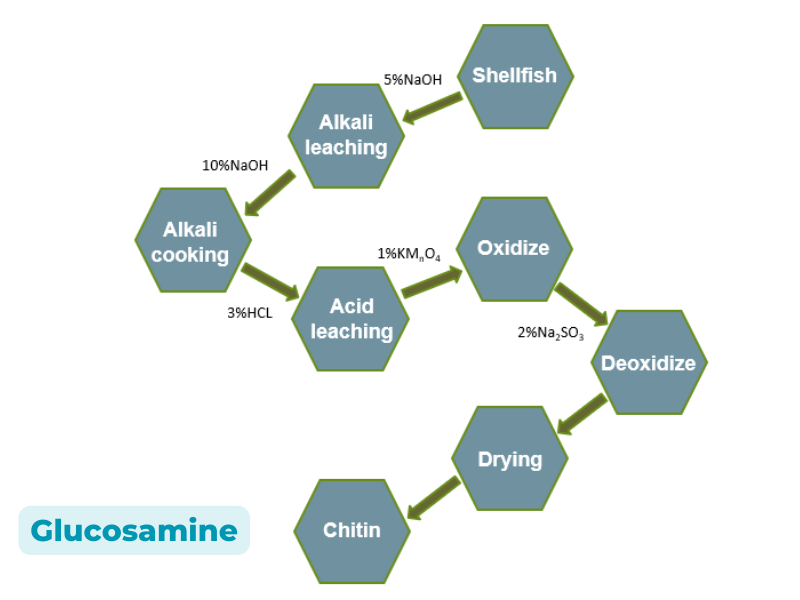
Vegetarian glucosamine for dogs - What you need to know?
Vegetarian glucosamine is an excellent alternative for those who have shellfish allergies or who are concerned about environmental impact. While traditional glucosamine is made from shellfish and requires a complex and energy-intensive process, vegetarian glucosamine offers a more sustainable and eco-friendly option.
There are two main ways to produce vegetarian glucosamine:
- Glucose from corn through a fermentation process
- Aspergillus niger, a type of mushroom known for its high chitin content
Another benefit of vegetarian glucosamine is that it is a great option for dogs and people with shellfish allergies. While traditional glucosamine can cause adverse reactions for those with allergies, vegetarian glucosamine is a safe and effective alternative.
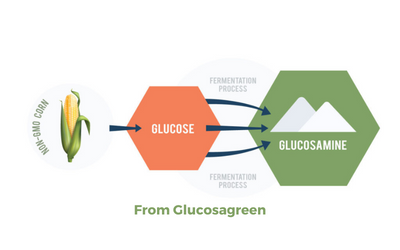
Despite its benefits, there are some limitations to consider when using vegetarian glucosamine. For example, limited research is available on the effectiveness and bio-availability of this type of glucosamine compared to traditional glucosamine.
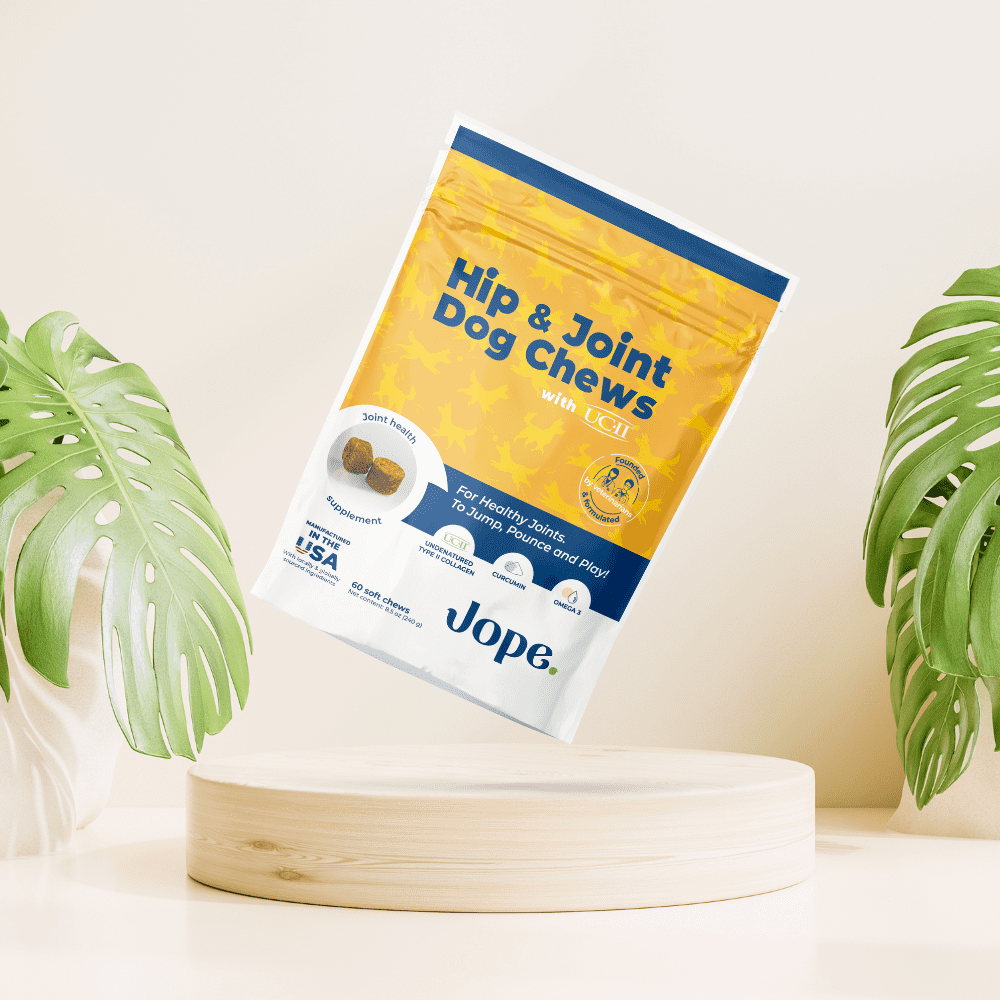

In my opinion, the best form of glucosamine for your dog will depend on your dog's preferences and circumstances. If you’re looking for joint support, I recommend taking a look at Undenatured Type II collagen and discussing supplements with your veterinarian to determine the best solution for your dog's joint health.












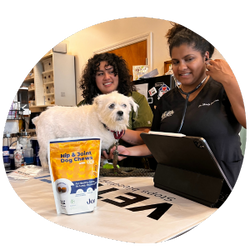
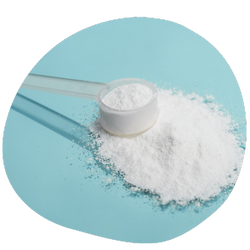


Leave a comment